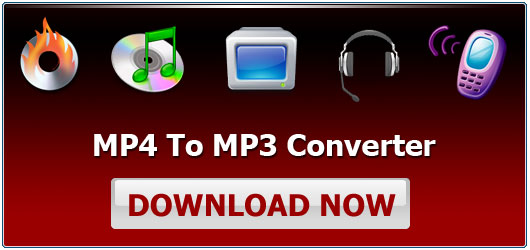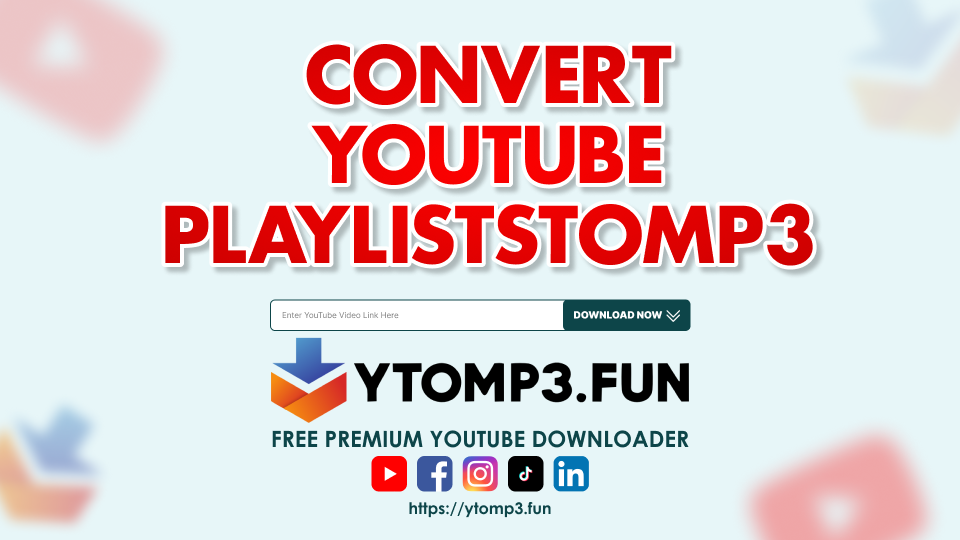How to Convert YouTube Playlists to MP3 and Organize Your Offline Music Library
Convert YouTube Playlists to MP3
Converting YouTube playlists to MP3 allows you to create an offline music library and access your favorite songs, podcasts, and other audio content whenever and wherever you choose. This guide will lead you through the full process of converting YouTube playlists to MP3 format and organizing your downloaded files to build a streamlined offline library that is both useful and pleasant.
Why Convert YouTube to MP3?
Converting YouTube playlists to MP3 has various advantages.
- MP3s do not require an internet connection, allowing you to listen to your music from anywhere.
- Storage Efficiency: MP3 files use less storage than movies, making them easier to handle.
- Convenience: MP3s allow you to organize files on your device, make playlists, and have complete control over your music collection.

1: Select a Reliable YouTube Playlist to MP3 Converter.
Before you begin, make sure to choose a converter capable of handling entire playlists. Here are some top-rated tools for converting YouTube playlists to MP3s:
- 4K Video Downloader: This program allows you to download complete playlists in quality up to 320kbps. It is compatible with Windows, macOS, and Linux.
- Y2Mate is an online converter that allows you to download YouTube playlists with no effort.
- MediaHuman YouTube Downloader: This utility is known for batch downloads and high-quality audio transcoding, and it is compatible with both Windows and macOS.
Each of these alternatives has simple playlist download capabilities and are known for maintaining audio quality, which is critical for a good listening experience.
2: Copy and Paste the YouTube playlist URL.
Once you’ve chosen your converter, follow these instructions to convert your playlist.
- Copy the playlist URL. On YouTube, find the playlist you wish to download. Copy the URL from the address bar.
- Paste the URL in the Converter. Open your preferred converter and paste the URL into the designated field.
Although the instructions for each tool may differ slightly, most converters follow a similar method.

3: Choose MP3 Format and Quality.
For the greatest listening experience, select high-quality settings:
- Most converters will allow you to select MP3 as the output format.
- Choose 320kbps Quality: If your converter supports several bitrates, select 320kbps for the best sound quality.
- Adjust Other Settings (If Available): Some converters allow you to change additional settings such as audio normalization and metadata tags.
Remember this tip: “For the best sound, always choose the highest available quality setting, especially if you’re converting music playlists.”
4: Begin the conversion process.
To begin the procedure, simply click the convert/download option. Long playlists may take some time, especially at higher bitrates. After the conversion is complete, you will be able to download each MP3 file to your device.
5: Organize your downloaded MP3 files.
Once you have your MP3 files, organization is essential for creating a functional offline library. Here’s how to set up a system that works for you:
Use a dedicated folder system.
Make a main folder for your music library. Organize this folder by artist, genre, or playlist to make it easier to find the audio you’re looking for.
Rename files consistently.
Make sure all files have consistent names to make finding easier. For example, use “Artist – Song Title”
Add Metadata to your MP3s.
Metadata comprises information such as song title, artist, album name, and genre. These details can be edited using applications such as Mp3tag (Windows) or Tag Editor (Mac). Adding information improves the ability to find specific music on media players.
Create playlists on your device.
Once sorted, you may use a media player such as iTunes, VLC, or even your smartphone’s music app to make playlists. These playlists allow you to tailor your collection to different moods, activities, or themes.
Managing Your Offline Music Library
Once you’ve sorted your MP3 files, here’s how to maintain your library manageable over time:
1. Regularly update playlists.
As you discover new music or stuff on YouTube, save it to your collection. Many converters offer batch updates, allowing you to easily download new items.
2. Back up your library.
Keep a backup of your music files on an external device or a cloud storage platform. This ensures that you will not lose your files if something happens to your device.
3. Use a Media Manager.
Consider using media management software like MusicBee or iTunes, which allow you to search by artist, genre, and album. These apps frequently offer playlists, metadata editing, and even album art, making them excellent for organizing big music collections.
This tip was highlighted: “Keeping a backup of your offline music library ensures you can recover your collection if your device is lost, damaged, or reset.”

Recommended YouTube playlist to MP3 converters based on device
Each device may necessitate slightly different procedures or tools, thus here are the top converters for certain platforms:
desktop (Windows, Mac)
- 4K Video Downloader is one of the best desktop apps for downloading YouTube playlists, with quality settings up to 320kbps.
- MediaHuman YouTube Downloader: Reliable for downloading individual videos and playlists, with customizable choices.
mobile (Android, iOS)
- Documents by Readdle (iOS): This app allows you to download YouTube videos and then convert them to using an online service.
- TubeMate (Android): TubeMate supports video downloads, which can then be converted to MP3 via a partner software such as MP3 Video Converter.
web browsers (any device).
Y2Mate is a popular web-based converter that enables playlist downloads It is compatible with any browser-enabled device.
FLVTO: This web tool allows you to convert playlists directly in your browser, eliminating the need for additional software.
Legal and ethical considerations
Converting YouTube videos to MP3 might be tricky legally because YouTube’s terms of service prohibit unauthorized downloads.
Below are some general guidelines:
- Download only content that you have permission to use. Look for work that is in the public domain, Creative Commons licensed, or that you own.
- Use Converters for Personal Use Only: While converting YouTube playlists for personal use is generally permitted, sharing or distributing these files may violate copyright.
- Review YouTube’s Terms of Service: To avoid problems, always make sure you’re following the platform regulations.

Conclusion
Converting YouTube playlists to MP3 is a simple operation that, with the correct tools and structure, may significantly improve your offline listening experience. You can construct a well-structured music library that is accessible at any time and from any location by using a high-quality converter such as 4K Video Downloader or Y2Mate and categorizing files using metadata.
“With a few simple steps, you can turn your favorite YouTube playlists into a high-quality MP3 library that’s perfect for offline listening.”
With these methods, you may now enjoy all of your favorite audio content in a portable, organized style. Dive in, discover new playlists, and create the ultimate offline music library!


3 Comments